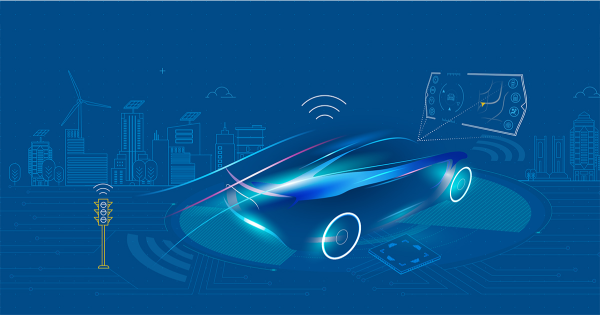The automotive industry is undergoing a significant transformation, driven by technological advancements that are reshaping the way vehicles operate. Two of the most groundbreaking innovations in this sector are autonomous vehicles and software-defined vehicles (SDVs). These cutting-edge technologies are revolutionizing mobility, enhancing safety, and redefining transportation as we know it.
Understanding Autonomous Vehicles
Autonomous vehicles, often referred to as self-driving cars, are designed to operate with minimal or no human intervention. These vehicles use advanced sensors, artificial intelligence (AI), and machine learning algorithms to navigate roads, detect obstacles, and make real-time driving decisions. Companies like Tesla, Waymo, and traditional automakers are investing heavily in autonomous vehicle development to make them a viable option for consumers worldwide.
The key components that enable autonomous driving include LiDAR sensors, radar systems, high-definition cameras, and onboard computing units. These elements work together to process data continuously, allowing vehicles to react to changing environments and avoid potential hazards. As technology progresses, fully autonomous vehicles are expected to become more common, paving the way for a future where human-driven cars may become obsolete.
The Role of Software-Defined Vehicles (SDVs)
Software-defined vehicles (SDVs) represent the next stage in automotive innovation. Unlike traditional vehicles that rely primarily on mechanical components, SDVs are controlled and managed through software-driven systems. This means that their functionalities can be continuously updated and improved via software patches and over-the-air (OTA) updates.
In an SDV, features such as driver assistance, entertainment systems, and vehicle diagnostics are all integrated into a centralized computing system. Automakers are increasingly adopting SDV architectures to enhance vehicle performance, security, and adaptability. Companies like Volkswagen, General Motors, and Tesla are already utilizing SDV technology to offer personalized user experiences, predictive maintenance, and even remote troubleshooting.
Advantages of Software-Defined Vehicles (SDVs)
The shift toward software-defined vehicles (SDVs) brings numerous benefits, both for manufacturers and consumers. One of the most significant advantages is the ability to update vehicle software remotely, eliminating the need for physical visits to service centers. This approach not only saves time but also enhances vehicle functionality without requiring hardware modifications.
Another key advantage of SDVs is improved cybersecurity. With the increasing connectivity of modern vehicles, the risk of cyber threats has grown. However, automakers are integrating robust security protocols to safeguard vehicle software from potential attacks. Regular software updates ensure that security measures remain up to date, protecting both the vehicle and its occupants.
Additionally, SDVs offer greater flexibility in feature customization. Owners can subscribe to or unlock specific features, such as advanced navigation, performance boosts, or entertainment options, based on their preferences. This level of customization enhances user satisfaction and opens new revenue streams for automakers.
The Intersection of Autonomous Vehicles and SDVs
The convergence of autonomous vehicles and software-defined vehicles (SDVs) is shaping the future of transportation. While autonomy focuses on eliminating the need for human drivers, SDVs provide the software backbone that enables these intelligent systems to function seamlessly. Together, these technologies create smarter, safer, and more efficient mobility solutions.
For instance, autonomous ride-hailing services rely on SDV technology to maintain real-time communication between vehicles and control centers. These systems use AI-driven analytics to optimize routes, improve energy efficiency, and enhance passenger safety. As self-driving capabilities improve, the reliance on software-defined architectures will become even more crucial.
Challenges and Future Prospects

Despite their immense potential, both autonomous vehicles and software-defined vehicles (SDVs) face significant challenges. Regulatory hurdles, safety concerns, and public trust are some of the key obstacles that need to be addressed before widespread adoption can occur. Governments and industry stakeholders must collaborate to establish clear guidelines and safety standards to ensure the successful deployment of these technologies.
Additionally, the cost of development and implementation remains high. Autonomous systems require extensive testing and validation to ensure their reliability in real-world scenarios. Likewise, SDV infrastructure demands robust computing power and cybersecurity measures, which can add to production expenses.
However, as technology continues to evolve and economies of scale take effect, the costs are expected to decrease. The increasing demand for smart, connected, and autonomous transportation solutions will drive further investment in research and development, ultimately making these innovations more accessible to the masses.
Conclusion
Autonomous vehicles and Software-Defined Vehicles (SDVs) are revolutionizing the automotive landscape, paving the way for a smarter and more efficient future of transportation. While challenges remain, ongoing advancements in AI, connectivity, and software development are bringing us closer to a world where self-driving cars and SDVs become the norm. As the industry continues to evolve, these innovations will not only enhance mobility but also redefine the way we interact with vehicles, making transportation safer, more convenient, and more sustainable.

